Hello, World!
In this chapter we will create a basic GraphQL server with Hot Chocolate and write our first GraphQL query to test our server works properly.
Creating a GraphQL Server from Template
First, let us create a directory for our GraphQL server.
mkdir BasicServer
To ensure that we use the correct version of .NET in our demo server, we will generate a global.json.
dotnet new globaljson
Ensure that version 7.0.100 or above is being used. The global.json file should look something like the following:
{
"sdk": {
"version": "7.0.100",
"rollForward": "minor"
}
}
Before generating our server project, we need to install the Hot Chocolate templates.
dotnet new install HotChocolate.Templates::13.5.1
Now that we have everything in place, we can generate the actual server project.
dotnet new graphql
dotnet restore
Testing the GraphQL Server
With this, we already have a working GraphQL server. Let`s start it and explore how we can query our GraphQL schema.
dotnet run
By default, the GraphQL server will listen on port 5000. Open your web browser and open the following address: http://localhost:5000/graphql
Our GraphQL IDE Banana Cake Pop will show up and allows you to explore the schema and write GraphQL queries.
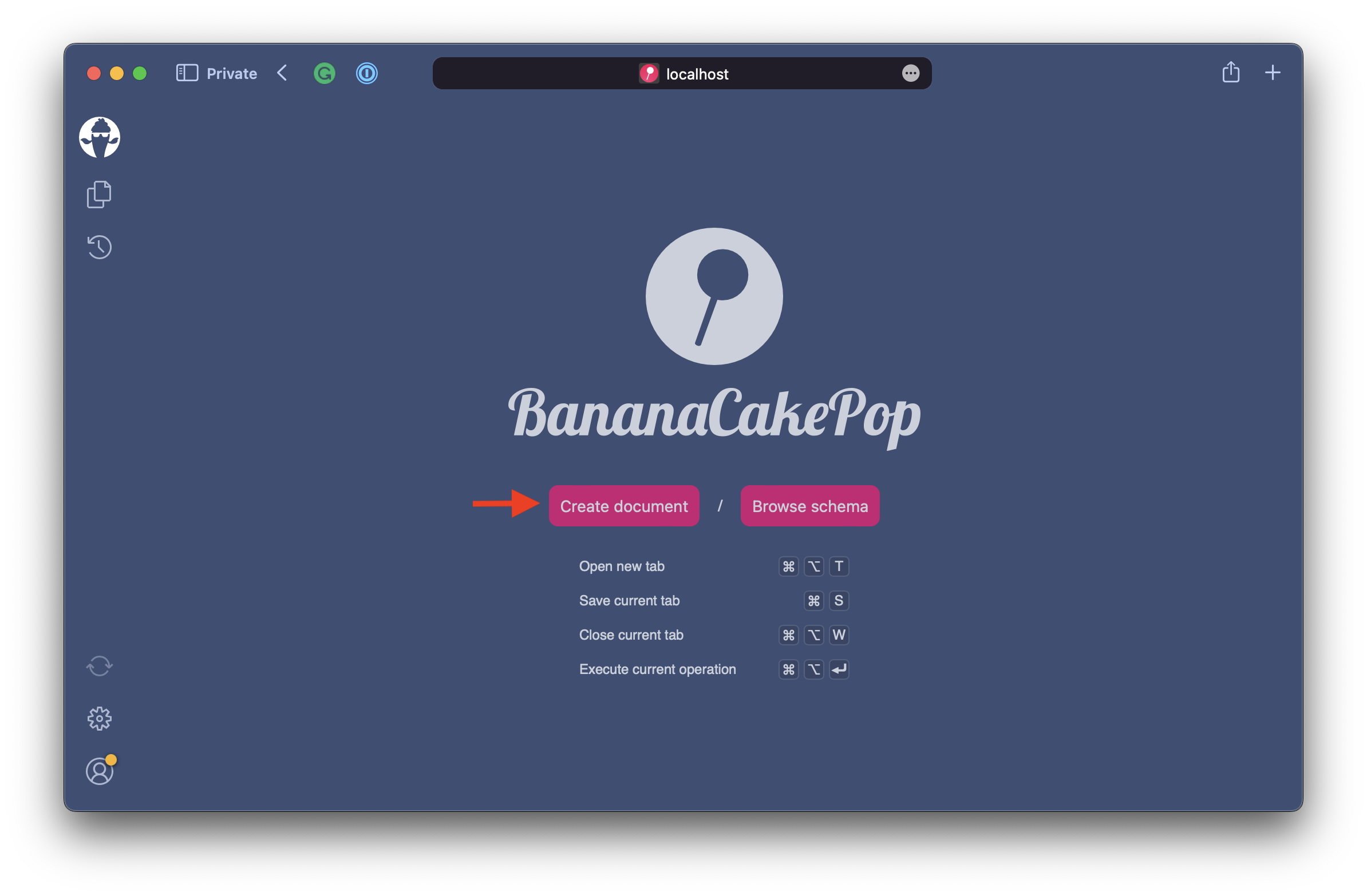
Click on the Create document button to open a new document that will allow you to explore the schema.
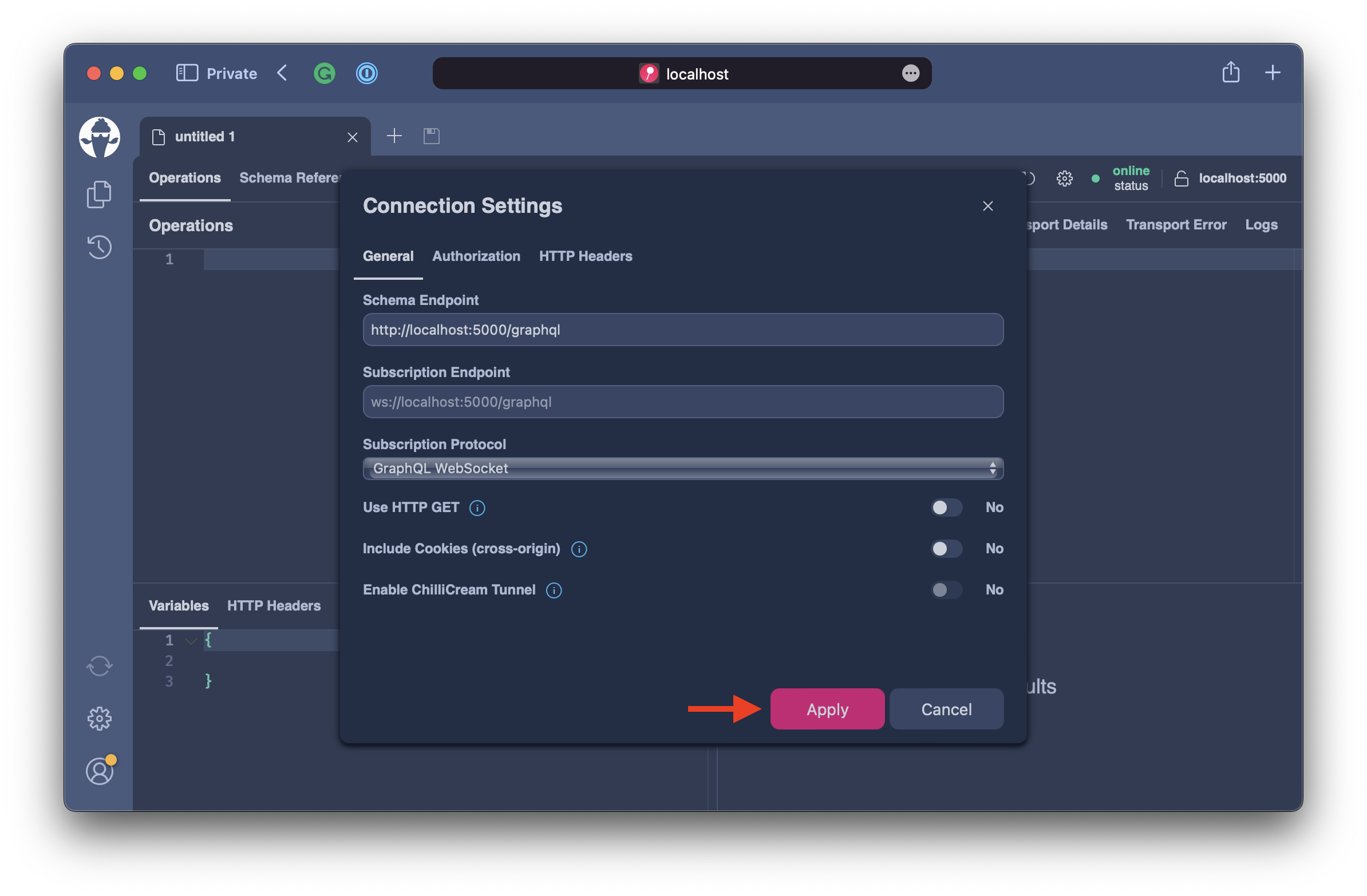
Click on Apply in the connection details dialog for accepting the server default settings to connect to the GraphQL endpoint.
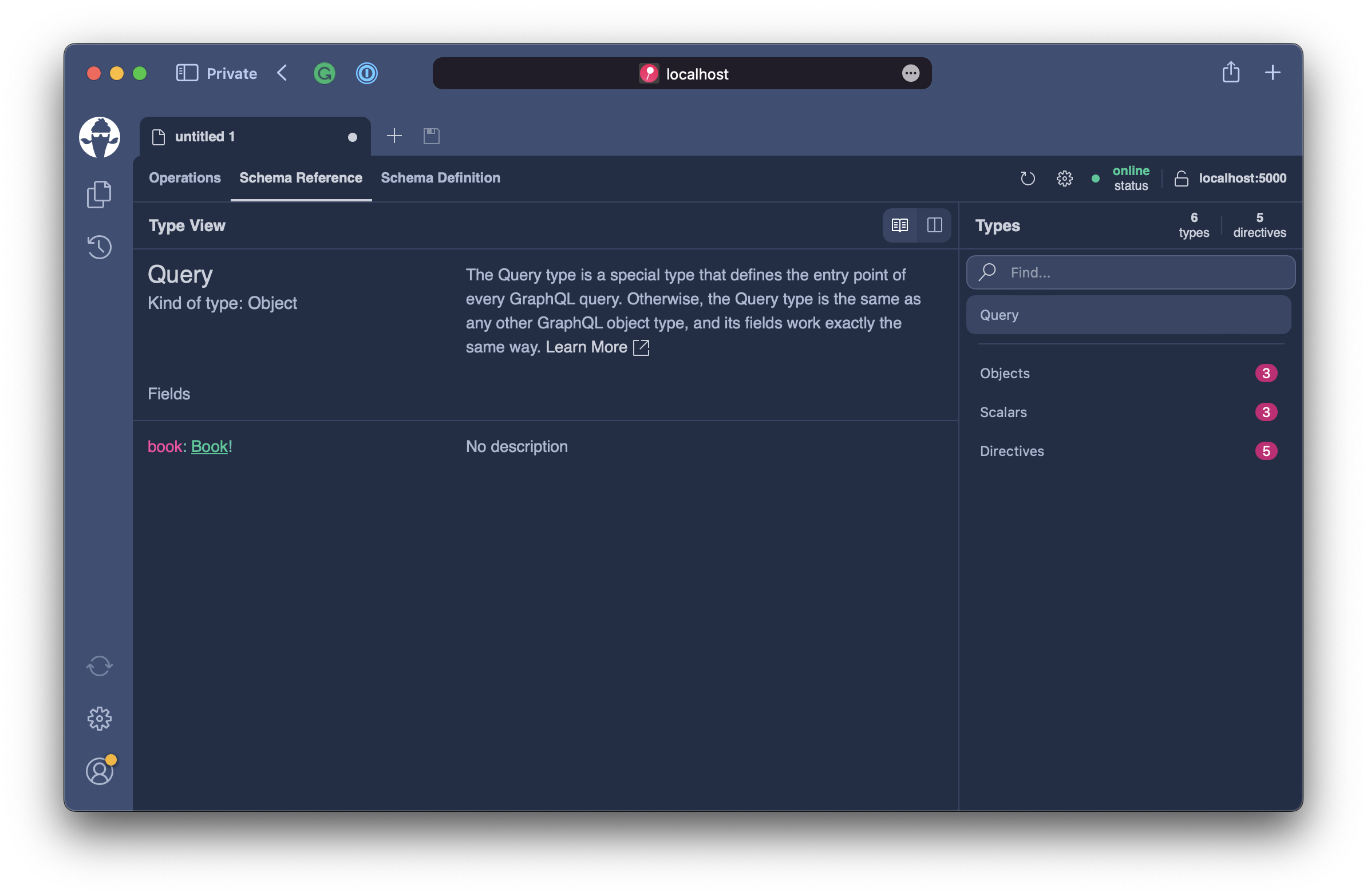
First, let's explore the schema by clicking on the Schema Reference tab. In the Schema Reference tab, we see the Query type documentation. As we already learned, the Query root type contains the root fields to read data when we execute a query operation.
Query operations in GraphQL are expected to be side-effect free, which means that the execution shall not alter the server's state.
Banana Cake Pop allows us to explore the schema with two different views. Often when exploring the schema, the column view is mor helpful. For this, let us switch to the column view now.
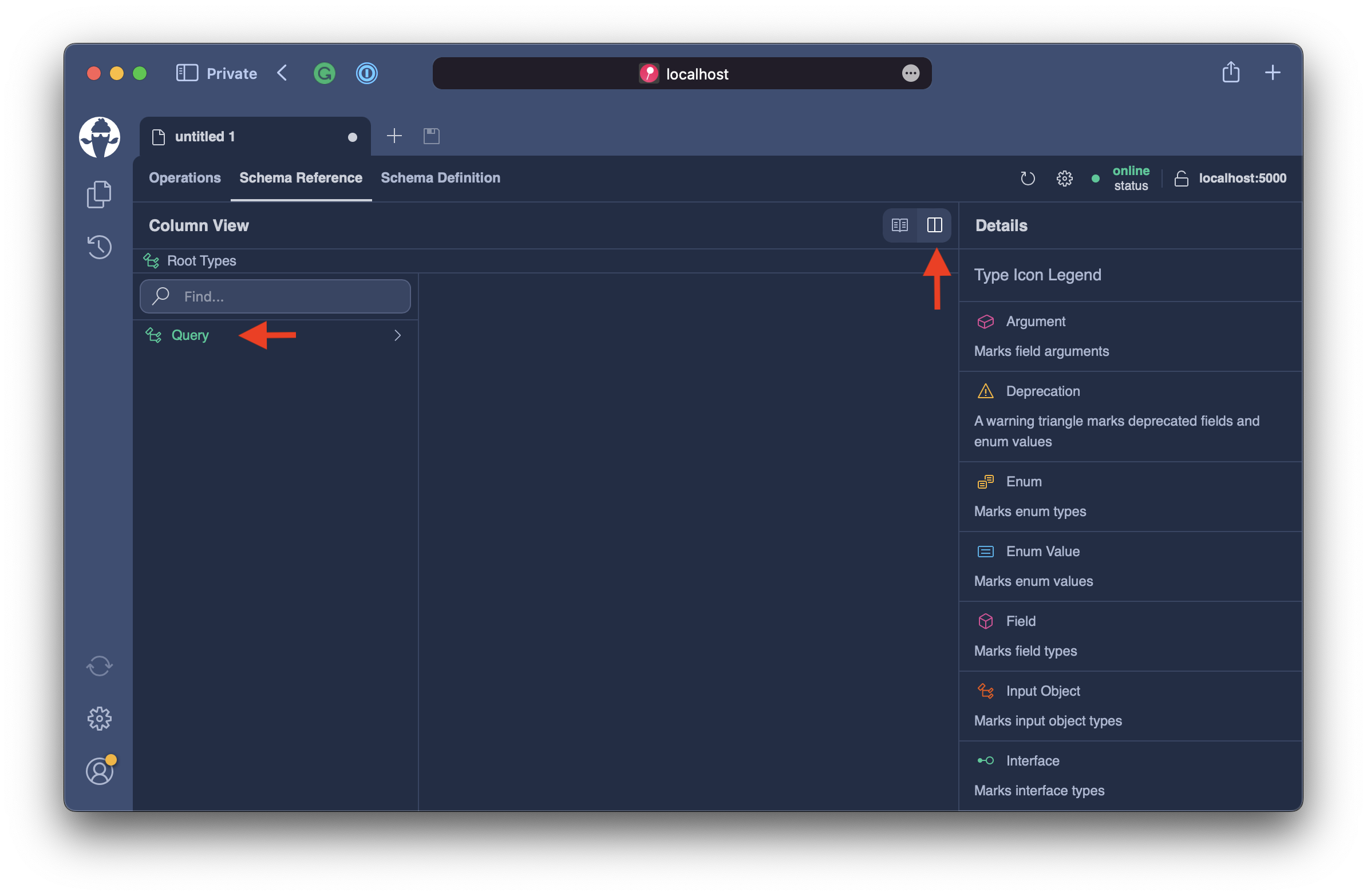
When clicking on the query root, we can drill into the graph. We can see that we can query for the book and query for the book's title and/or author.
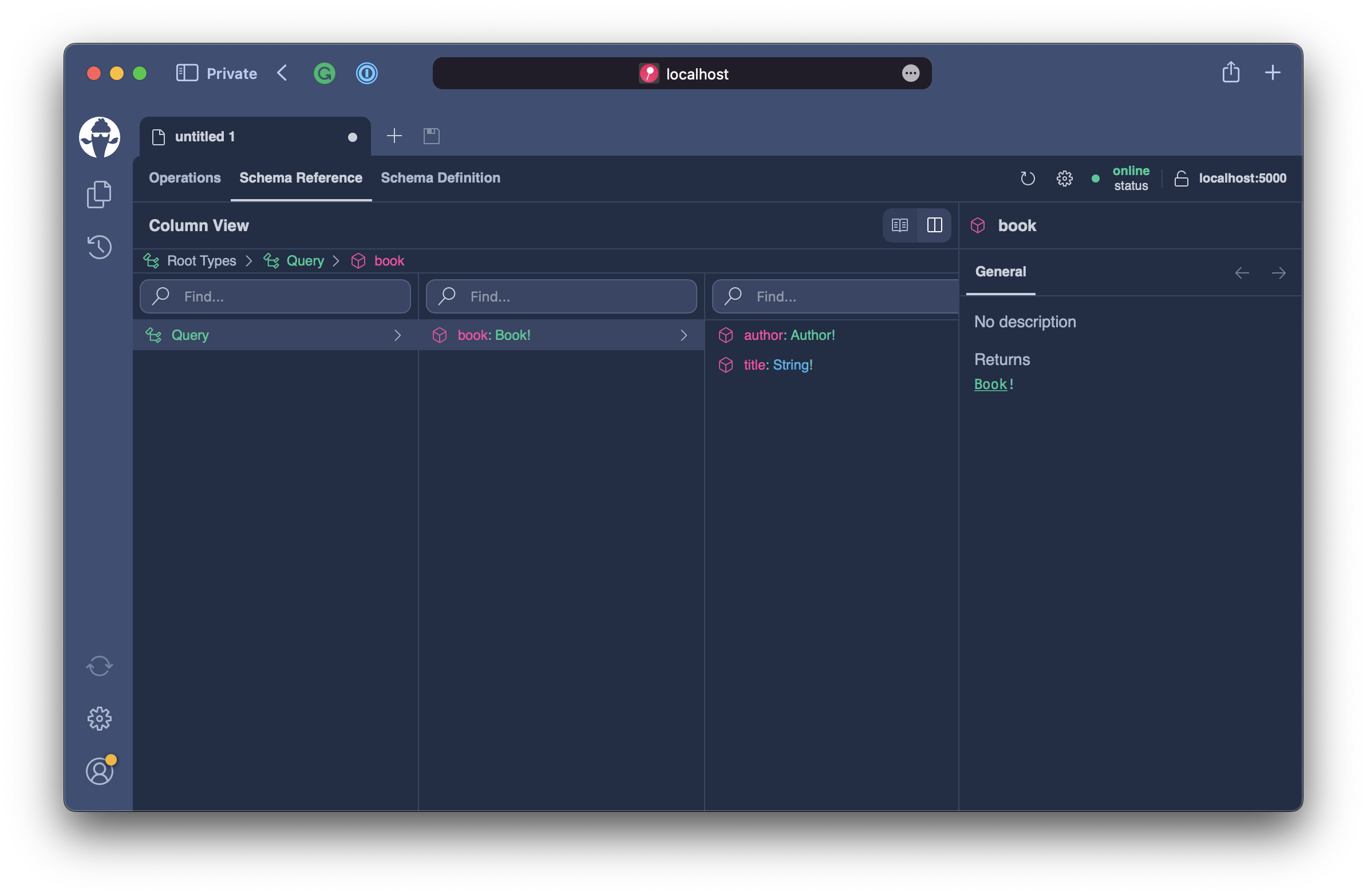
Now, let us switch back to the Operations tab and write our first query to get the book title. Copy the following query into the left-hand side of the operations tab and click on the Run button.
query {
book {
title
}
}

The server will respond with the following result.
{
"data": {
"book": {
"title": "C# in depth."
}
}
}
GraphQL will respond only with the data you asked for, no more, no less. The Book type also contains a field `Author?, but it is not included in the response.
Resolvers
Stop the server and let us open Visual Studio Code explore and customize the server project.
code .

Our GraphQL server has 2 important code files Program.cs and Types/Query.cs. Head over to the Program.cs first.
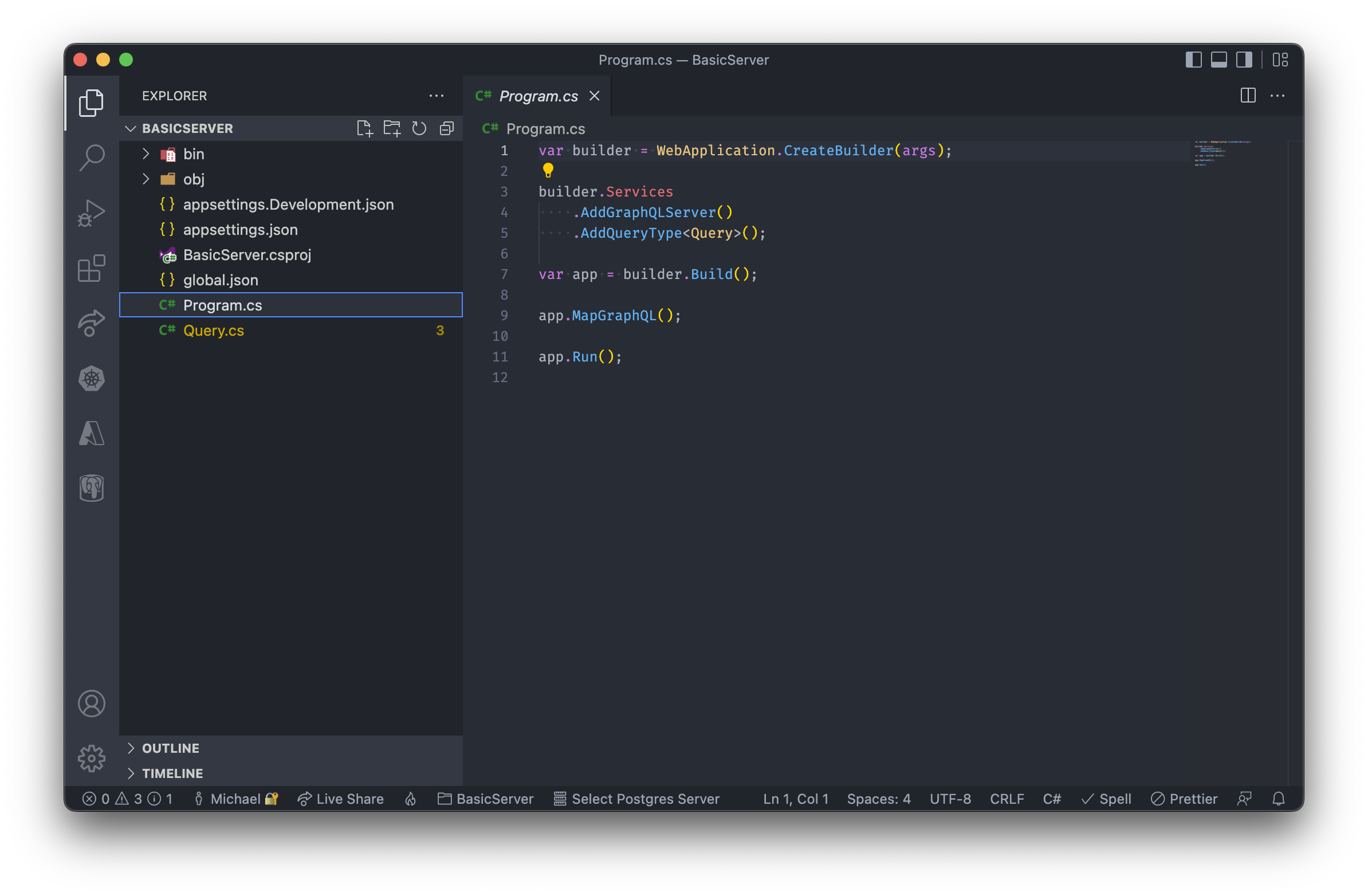
The Program.cs contains the server configuration.
builder.Services
.AddGraphQLServer()
.AddTypes();
We have two important things here:
AddGraphQLServerregisters a GraphQL server as a service with the .NET core dependency injection and returns a GraphQL configuration builder that allows us to chain in configurations.AddTypesis a source generated GraphQL type module that registers all the GraphQL related code we are writing.
You can host multiple GraphQL servers by naming them.
builder.Services
.AddGraphQLServer("Schema1")
.AddTypes();
builder.Services
.AddGraphQLServer("Schema2")
.AddTypes();
Let's head over to our Types/Query.cs and explore it.
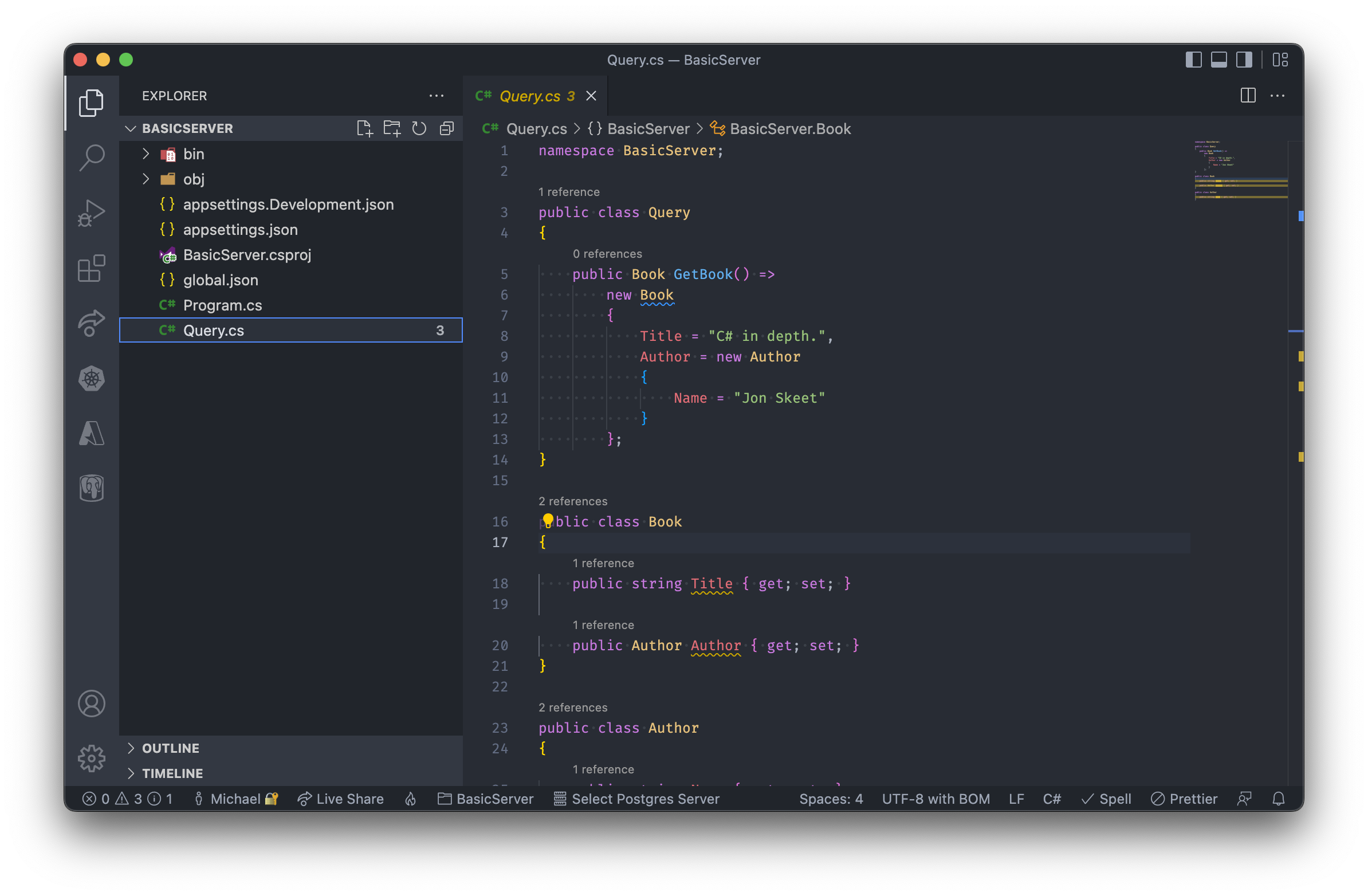
The current class Query has a single resolver GetBook which returns a book object. Hot Chocolate traverses the type tree and automatically infers all types connected to the Query type. Because of that there's no need to register types for Book or Author, although you could do so to apply a specific configuration.
Hot Chocolate also applies GraphQL naming conventions. In this particular case, we will remove the verb 'Get' from the method and also adjust the casing to be camelCase.
OK, let's delete all the source code in this file and replace it with the source code below.
namespace BasicServer;
[QueryType]
public class Query
{
public string Greetings(string name = "World")
=> $"Hello, {name}!";
}
Our new Query class has a single resolver called Greetings. Since we do not have the Get verb included in the method name, all that happens is an adjustment to camelCase. Our new Query type will look like the following:
type Query {
greetings(name: String! = "World"): String!
}
The nice thing is that Hot Chocolate infers the correct nullability, arguments, and default value from the .NET representation.
Start your server again.
dotnet run
Now, let us head over to http://localhost:5000/graphql and refresh the schema.
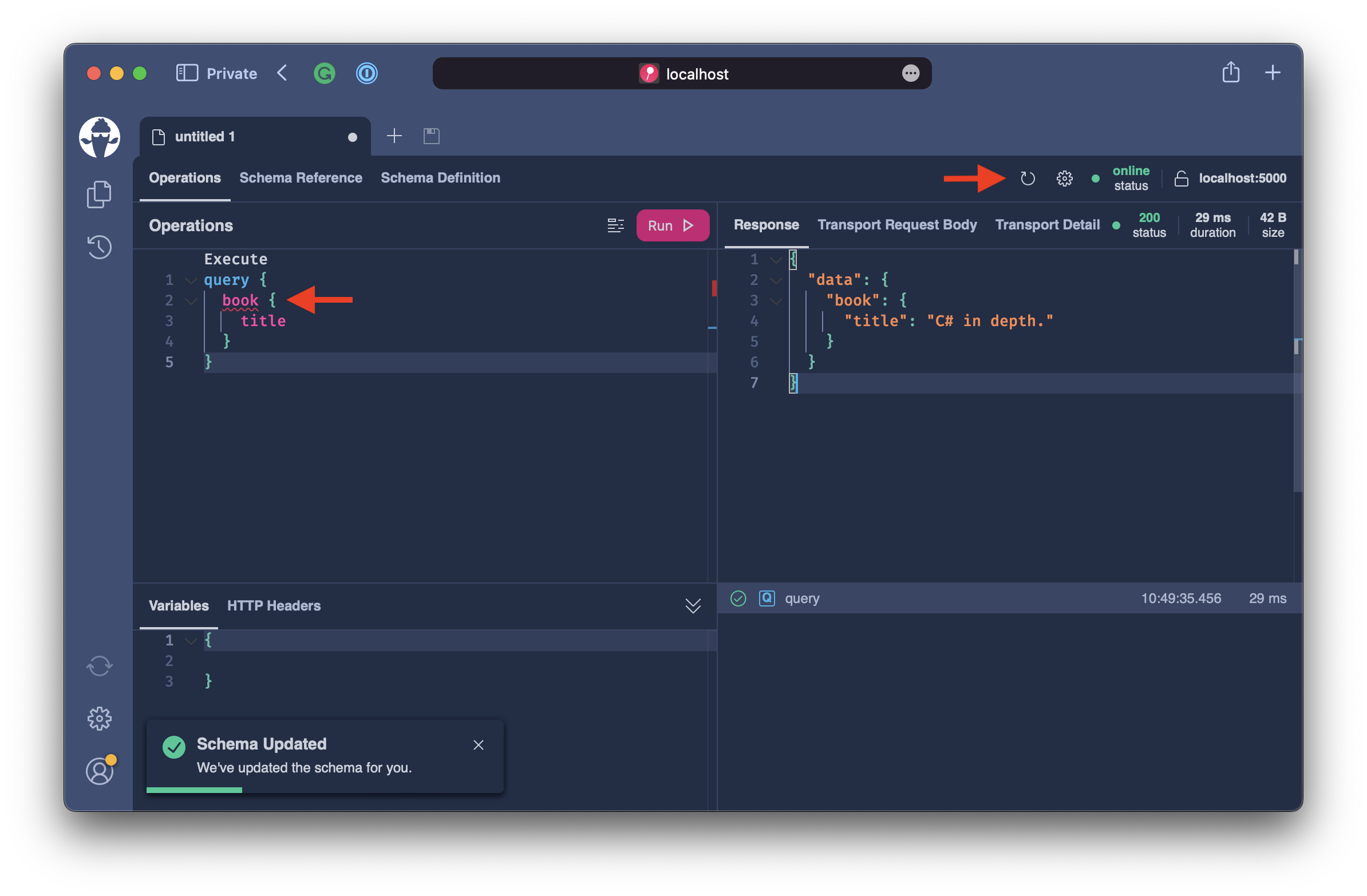
Our previous GraphQL query is now marked with some squiggles telling us that the query is no longer valid. This is because we modified our schema.
When we inspect the Schema Reference, we can see that our schema has changed, and the Query type now has the greetings field with the correctly inferred argument name.
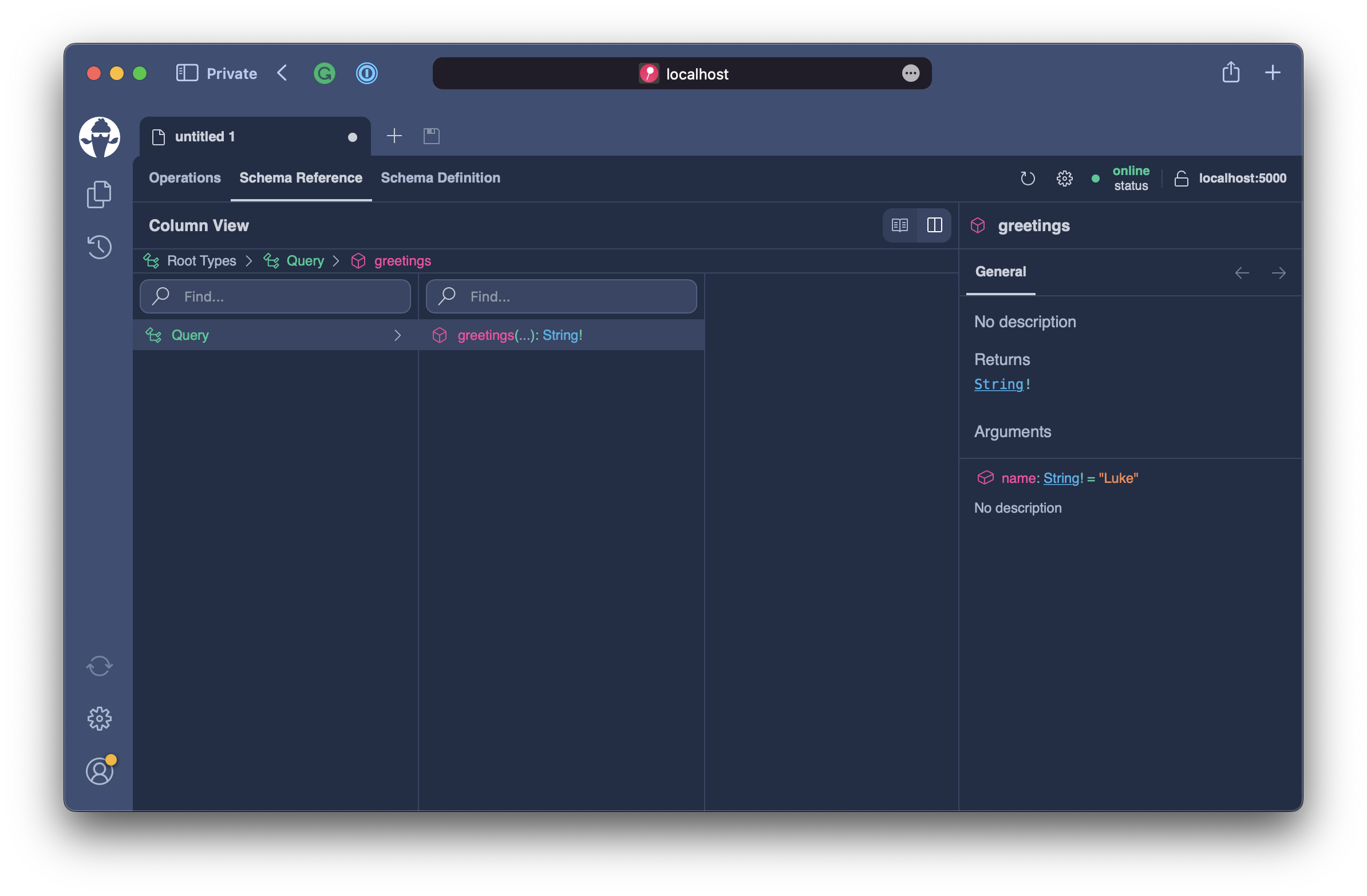
Head back to the Operations tab and replace the query with the current one.
query {
greetings
}
Once you execute the above query, you will get the result Hello, World! since we did not define any value for the name argument.
{
"data": {
"greetings": "Hello, World!"
}
}
Let`s add an argument value and verify that it is passed along correctly.
query {
greetings(name: "MyName")
}
{
"data": {
"greetings": "Hello, MyName!"
}
}
Summary
In this chapter, we have made our first baby steps into the GraphQL roam. We have written our first few queries and explored some fundamental query characteristics. Further, we explored the ChilliCream GraphQL IDE Banana Cake Pop that is bundled with the Hot Chocolate server.
After our initial exploration, we have looked at how we can configure a Hot Chocolate GraphQL server and defined our first GraphQL resolver. As we progress through this workshop, we will learn many more new concepts about resolvers.